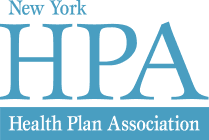2018 Rate Requests: “New Day, Same Old Story”
For Immediate Release: May 15, 2017
The New York Health Plan Association (HPA) today predicted health plans would seek double digit premium increases for individual and small group policies for 2018, citing ongoing costs of health care that continue to go unchecked.
“The year has changed, but the story is the same,” said Paul F. Macielak, HPA president and CEO. “As plans put the finishing touches on their 2018 rate submissions, being filed today, we know that they continue to grapple with increasing hospital, doctor and prescription drug costs. As Yogi Berra so famously said, ‘It’s like déjà vu all over again.’ ”
“Just as troubling as the underlying cost drivers is the other recurring theme here in New York, where the Department of Financial Services reduces the average requested increases,” added Macielak.
HPA pointed to the past three years where DFS has used its authority under New York’s Prior Approval law to reduce proposed rate increases. In 2015 and 2016 DFS touted that its action held increases to “below the average increase in health care costs.”
| 2017 | Requested Average Increase | Approved Increase | Reduction |
| Individual | 19.3% | 16.6% | -16% |
| Small Group | 12.3% | 8.3% | -32% |
| 2016 | |||
| Individual | 10.4% | 7.1% | -30% |
| Small Group | 14.4% | 9.8% | -32% |
| 2015 | |||
| Individual | 12.5% | 5.7% | -54% |
| Small Group | 13.9% | 5.7% | -59% |
(Source: DFS press releases)
The impact of continued reductions to requested rates is continued losses for many plans, which threatens the financial stability of New York’s insurance market, noted HPA.
Factors increasing the underlying cost of care and contributing to plans’ need for rate increases include:
- Prescription drug costs—The most recent Health Care Cost Institute (HCCI) report on health care spending found spending on prescription drugs grew faster than spending on any other health care service, reaching $649 per capita in 2015 and representing an 11.4% increase from the previous year. In New York, recent legislation that limits health plans’ tool to control pharmacy costs such as step therapy will further contribute to escalating prescription prices.
- Hospital consolidations—A report from the New York State Health Foundation last December highlighted that hospital market share provides the ability to leverage negotiations, playing a key factor in higher prices.
- Taxes—New York’s Health Care Reform Act (HCRA) imposes surcharges and assessments on health care that add up to $5 billion annually. This would be compounded if the suspension of the Affordable Care Act’s health insurance tax (HIT) is not continued, which will add an estimated 3% premiums.
- Mandates—So far this legislative session 92 proposals have been introduced seeking to expand existing coverage or impose new coverage benefits. While well intended, mandates ultimately increase utilization and costs of services, consequently adding to the overall price of coverage.
2018 rate request prediction – HPA release“Ensuring a stable marketplace should be a priority for New York, particularly given the present backdrop of uncertainty for the health care community as a whole stemming from discussions in Washington, D.C.,” said Macielak.
